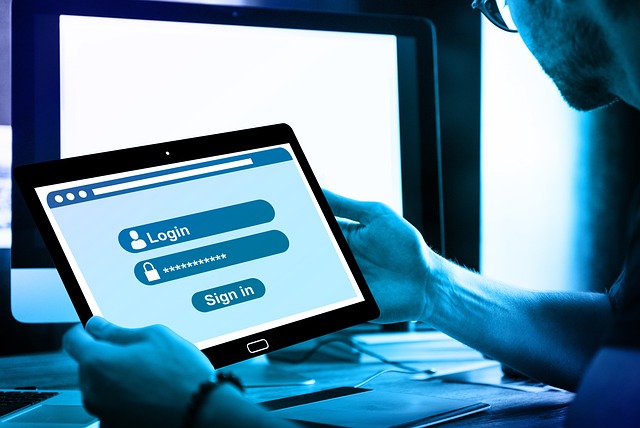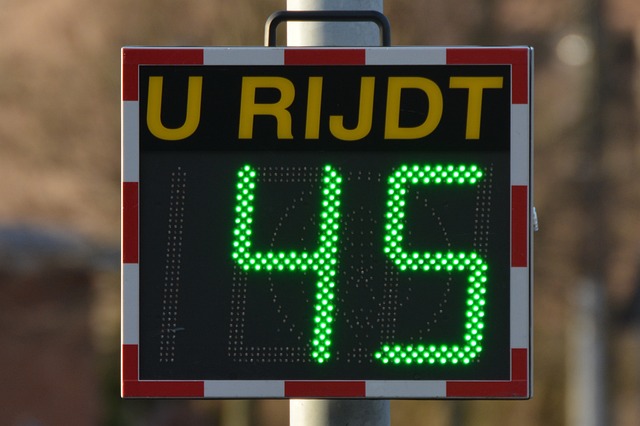Managing vehicle registration involves understanding your state's specific DMV protocols, which include providing proof of ownership, identity verification, and residency confirmation. Some states also require vehicle inspections or emission tests. To avoid in-person waits, utilize your state's DMV website for guidance on current procedures and necessary documentation, including online platforms for registration replacements and transfers. These e-services offer real-time tracking of application statuses and are beneficial for both new and existing residents. If your registration is lost, start by initiating the replacement process via your state's online service portal, providing essential details and submitting them accurately to prevent delays. After applying, follow the instructions, which may involve identity verification, online fee payment, and printing a temporary registration if available. Keep proof of application and monitor your mail for the permanent replacement. Should an in-person visit be necessary, locate the nearest DMV office, gather all required documentation, and adhere to their procedures. The DMV has modernized its processes with user-friendly digital solutions that save time and enhance security, offering online document submission, payment processing, and immediate access to FAQs or support through mobile apps. These advancements have made vehicle registration transfers more efficient and customer-centric, with tutorials and responsive support ensuring a smooth process. Staying informed via your state's DMV updates is crucial for maintaining compliance and avoiding legal issues. Proactive preparation and utilization of these digital tools are key to managing vehicle registrations effectively.
navigating the complexities of vehicle registration has traditionally been a cumbersome task for many drivers. Whether you’re replacing a lost registration or transferring ownership, the process can seem daunting with potential for long waits and in-person visits. However, a new wave of digital solutions introduced by state DMVs is streamlining these processes, offering faster and more convenient alternatives. This article demystifies the vehicle registration process, providing clear guidance on how to efficiently manage your registration needs. From understanding the essentials of your specific requirements to leveraging cutting-edge tools for a smooth transfer or replacement, we’ll explore the steps necessary to ensure a hassle-free experience. By staying informed and proactive, you can avoid disruptions and maintain uninterrupted mobility with ease.
- Understanding Your Vehicle Registration Needs
- Step-by-Step Guide for Replacing a Lost Registration
- Streamlining the DMV Vehicle Registration Transfer Process
- Digital Solutions for Efficient Registration Handling
- State-Specific Requirements and Tips for Success
- Avoiding Setbacks with Proactive Measures and Resources
Understanding Your Vehicle Registration Needs

When addressing vehicle registration needs, it’s crucial to be well-informed about the specific requirements set forth by your state’s Department of Motor Vehicles (DMV). Whether you’re replacing a lost registration or transferring ownership due to a sale or gift, the process can vary significantly from one jurisdiction to another. Typically, you will need to provide documentation such as proof of vehicle ownership, identity verification, and residency confirmation. Additionally, certain states may require a vehicle inspection or emission test certification before processing your application. To navigate these processes efficiently, it’s advisable to check your state’s DMV website for the most up-to-date guidelines and required documentation. This will not only expedite the transaction but also ensure compliance with local laws and regulations.
With the advent of digital services, many DMVs offer online platforms where you can submit applications for registration replacements or transfers. These e-services are designed to streamline the process, allowing for quicker turnaround times without the need for physical visits to a DMV office. By leveraging these digital tools, you can complete necessary forms, make payments, and track the status of your application from start to finish. It’s important to familiarize yourself with the technology options available in your state, as they can greatly facilitate managing your vehicle registration needs. Whether you’re a new resident updating your vehicle registration or a current owner dealing with lost paperwork, the modernized solutions provided by DMVs help ensure that your transportation remains legally and safely operational.
Step-by-Step Guide for Replacing a Lost Registration

When faced with a lost vehicle registration, prompt action is necessary to maintain compliance with state laws and ensure uninterrupted road usage. The first step in replacing a lost registration is to visit your state’s Department of Motor Vehicles (DMV) website. Most states now offer an online service portal where you can initiate the replacement process. You will typically need to provide personal identification details, vehicle information, and the reason for the replacement—in this case, ‘lost.’ Ensure that all the information is accurate to avoid delays.
Once your application is submitted, you’ll receive instructions on the necessary next steps. These may include verifying your identity through electronic means, paying any applicable fees online, and printing a temporary registration document if offered. If an immediate temporary registration is not available, make sure to keep a record of your application submission as proof of your efforts to obtain a new registration. Additionally, check your mail regularly for the permanent replacement registration, as it will contain critical information such as vehicle specifics, owner details, and any decals or stickers required for proper display on your vehicle. If you reside in a state that requires a physical visit to the DMV, locate the nearest office, prepare the required documentation, and adhere to their guidelines for an in-person replacement. Regardless of the method chosen, completing these steps will ensure that your registration is current and valid, allowing you to travel without interruption.
Streamlining the DMV Vehicle Registration Transfer Process

The process of transferring vehicle registration at the Department of Motor Vehicles (DMV) has undergone significant improvements to streamline operations and enhance customer experience. Recognizing the inconvenience caused by long queues and physical paperwork, many states have adopted digital platforms that facilitate the DMV vehicle registration transfer process. These online systems allow for the electronic submission of necessary documents, payment of associated fees, and real-time tracking of application status, all from the comfort of one’s home or office. This transition to digital not only accelerates the processing time but also ensures a more secure handling of personal information. Applicants are guided through each step, ensuring that all legal requirements are met without the need for manual document verification, which was previously necessary during in-person visits. The online system’s user-friendly interface and clear instructions make it accessible to individuals with varying levels of technological proficiency, further democratizing access to vehicle registration services. Additionally, some states have introduced mobile applications that offer a direct line of communication with the DMV, enabling users to receive immediate assistance or answers to frequently asked questions, thus ensuring a smooth transfer process from start to finish.
Digital Solutions for Efficient Registration Handling

State Department of Motor Vehicles (DMVs) have significantly streamlined the process of vehicle registration replacement and transfer by adopting digital solutions. These innovative platforms allow vehicle owners to complete necessary documentation without the need for physical visits to DMV offices, saving time and reducing the risk of exposure to illnesses associated with in-person interactions. The digital applications are designed to be user-friendly, guiding users through each step of the registration process. From submitting required documents to making payments, these online services ensure that all transactions are conducted efficiently and securely. Additionally, these systems often include real-time status updates, enabling users to track their application’s progress. This level of transparency and convenience not only accelerates the overall process but also provides a more satisfying customer experience. Moreover, as part of these digital initiatives, many states offer tutorials and customer support through chatbots or help desks, further assisting individuals in navigating the registration process without complications. These advancements have made handling vehicle registrations a more streamlined and less burdensome task, demonstrating the effectiveness of digital transformation in public services.
State-Specific Requirements and Tips for Success

Each state’s Department of Motor Vehicles (DMV) has its own set of rules and procedures for vehicle registration replacement or transfer, so it’s crucial to familiarize yourself with the specific requirements of your state. These can include documentation such as proof of ownership, identification, and residency, which may vary in format and acceptance. For instance, some states might require a notarized bill of sale for a transfer, while others may accept a simple written agreement. Additionally, if you’re replacing a lost registration, certain states may ask for a police report to document the loss. To navigate these state-specific nuances successfully, start by visiting your state’s DMV website, where most have streamlined the process with online guides and checklists. These resources will outline exactly what you need to submit and the steps to follow. For those who prefer or are required to apply in person, locate your nearest DMV office and make an appointment to minimize wait times. Regardless of the method you choose, be meticulous with your paperwork, as incomplete or incorrect information can lead to processing delays. Lastly, keep abreast of any updates or changes to your state’s registration process by subscribing to DMV communication channels or following their social media accounts for timely announcements and guidance. By staying informed and prepared, you’ll ensure a smooth transaction whether you’re replacing a lost registration or transferring ownership.
Avoiding Setbacks with Proactive Measures and Resources

To navigate the process of vehicle registration replacement or transfer without encountering setbacks, proactive measures are key. Many drivers underestimate the importance of keeping their registration documents up-to-date and accessible. A lost or damaged registration can be a significant inconvenience, but with the advent of digital services, obtaining a replacement has become more straightforward. State DMVs have streamlined the process by offering online applications that allow for immediate submission and processing of new registrations. These digital solutions not only save time but also reduce the likelihood of human error that can occur with paper-based forms. Additionally, understanding the specific requirements set forth by your state’s DMV—such as necessary documentation, fees, and acceptable forms of identification—will ensure a smooth transaction. By staying informed about these requirements and utilizing the latest online tools, you can efficiently handle your vehicle registration needs and avoid potential disruptions to your travel plans.
Furthermore, when it comes time to transfer a vehicle’s registration into your name, being well-prepared is crucial to expedite the process. The DMV has various resources available to guide you through the transfer process, including detailed guides and checklists that outline each step you need to take. These resources often include direct links to the online forms you’ll need to fill out, as well as information on any accompanying documentation that must be provided. Additionally, customer service representatives are available to assist with any questions or concerns you may have. By leveraging these tools and resources, you can minimize the time spent on transferring vehicle registration and ensure compliance with state regulations, thereby avoiding potential legal issues and maintaining continuous insurance coverage without interruption.
Navigating the process of replacing a lost vehicle registration or transferring ownership at the DMV can be streamlined and made more convenient thanks to advancements in digital applications. The article has outlined the essential steps and resources necessary for these tasks, from understanding your specific needs to utilizing state-specific guidelines and tools. By embracing these modern solutions, you can efficiently manage vehicle registration changes without the need for extensive in-person interactions or unnecessary delays. With clear instructions and a proactive approach, you are well-equipped to handle such procedures with ease, ensuring uninterrupted access to your vehicle registration as required.



